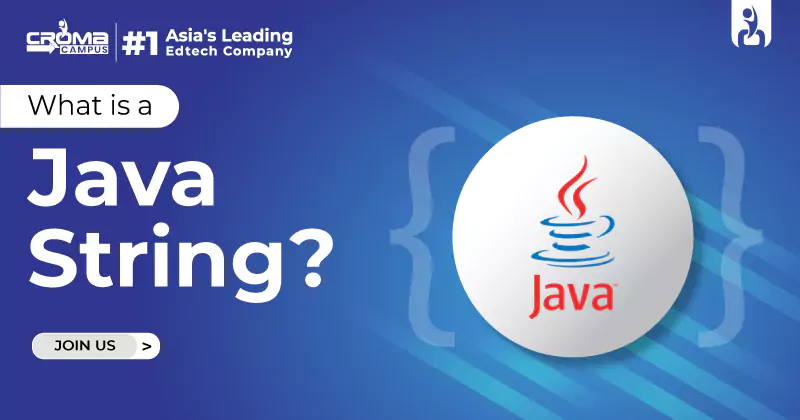What Is An Array In Java? Step-by-Step Guide
4.9 out of 5 based on 4578 votesLast updated on 7th Nov 2024 4.7K Views
- Bookmark

An array in Java is a data structure that stores multiple values of the same type in a single variable, accessed using an index.

Arrays are a fundamental concept in Java programming, serving as one of the primary data structures that allow developers to store and manage data collections efficiently. Understanding arrays is crucial for anyone pursuing a career in Java development, especially those looking to enroll in a Java Full Stack Developer Course. Explore the concept of arrays in Java, their types, how to declare and initialize them, and practical examples to help you master this essential topic.
Table of Contents
- What is an Array?
- Types of Arrays
- 1D Arrays
- 2D Arrays
- Multi-dimensional Arrays
- Declaring and Initializing Arrays
- Accessing Array Elements
- Advantages of Using Arrays
- Common Operations on Arrays
- Array of Objects
- Limitations of Arrays
- Best Practices for Working with Arrays
- Conclusion
1. What is an Array?
An array is a collection of elements, stored in contiguous memory locations, all of the same type. It provides a way to store multiple values in a single variable, making it easier to manage large datasets. For example, if you want to store the scores of students in a class, an array would allow you to group all the scores under a single variable name.
Features of Arrays:
- Fixed Size: The size of an array must be specified at the time of creation, and it remains constant. For example, if you create an array to hold 5 integers, you cannot add a sixth integer later.
- Homogeneous Elements: All elements in an array must be of the same type i.e homogeneous. For example, an array of integers can only store integers, while an array of strings can only store strings.
- Zero-based Indexing: The first element of an array is accessed using index 0, the second element with index 1, and so on. The last element is accessed with the index length - 1.
- Contiguous Memory Allocation: The elements of an array are stored in contiguous memory locations, allowing for efficient access and iteration.
Understanding arrays is essential for a Java Full Stack Developer Interview, as you may face questions about array operations and common algorithms. Mastering arrays is vital for any aspiring Java developer.
2. Types of Arrays
1D Arrays
A one-dimensional (1D) array is the simplest form of an array. The 1D array can be visualized as a list of items. Here’s how to declare and initialize a 1D array:
int[] scores = new int[5]; // Declaration
scores[0] = 85; // Initialization
scores[1] = 90;
scores[2] = 78;
scores[3] = 88;
scores[4] = 92;
2D Arrays
A two-dimensional (2D) array can be visualized as a table or a matrix. It contains rows and columns. Here’s an example of how can you declare and initialize a 2D array:
int[][] matrix = {
{1, 2, 3},
{4, 5, 6},
{7, 8, 9}
};
Multi-dimensional Arrays
Multi-dimensional arrays can have more than two dimensions. They are used for complex data structures. Here’s an example of how can you declare and initialize a three-dimensional array:
int[][][] threeDArray = new int[3][3][3]; // Declaration
3. Declaring and Initializing Arrays
Declaring and initializing arrays in Java is straightforward. Below are various methods for both 1D and 2D arrays.
1D Array Declaration and Initialization
// Method 1: Declaration and Initialization
int[] numbers = {10, 20, 30, 40, 50};
// Method 2: Declaration and then Initialization
int[] numbers = new int[5];
numbers[0] = 10;
numbers[1] = 20;
numbers[2] = 30;
numbers[3] = 40;
numbers[4] = 50;
2D Array Declaration and Initialization
// Method 1: Declaration and Initialization
int[][] grid = {
{1, 2, 3},
{4, 5, 6},
{7, 8, 9}
};
// Method 2: Declaration and then Initialization
int[][] grid = new int[3][3];
grid[0][0] = 1;
grid[0][1] = 2;
grid[0][2] = 3;
4. Accessing Array Elements
In an array, you can access elements using their index. Here’s how you can retrieve and display elements:
Accessing 1D Array Elements
for (int i = 0; i < scores.length; i++) {
System.out.println("Score at index " + i + ": " + scores[i]);
}
Accessing 2D Array Elements
for (int i = 0; i < matrix.length; i++) {
for (int j = 0; j < matrix[i].length; j++) {
System.out.print(matrix[i][j] + " ");
}
System.out.println();
}
5. Advantages of Using Arrays
Using arrays comes with several advantages:
- Efficiency: Arrays provide efficient access to elements using their index.
- Storage: They use less memory compared to other data structures, as they store elements in contiguous memory locations.
- Ease of Use: Arrays make it easy to iterate through collections of data.
6. Common Operations on Arrays
a. Array Length
Using the .length property, you can find the length of an array.
System.out.println("Length of scores array: " + scores.length);
b. Copying Arrays
You can copy arrays using the System.arraycopy() method or by using Arrays.copyOf().
int[] copiedArray = Arrays.copyOf(scores, scores.length);
c. Sorting Arrays
You can sort arrays using Arrays.sort() method.
Arrays.sort(scores);
d. Searching Arrays
To search for an element, you can use a loop or Arrays.binarySearch() for sorted arrays.
int index = Arrays.binarySearch(scores, 90);
e. Example: Common Array Operations
Here’s a complete example demonstrating common array operations:
import java.util.Arrays;
public class ArrayExample {
public static void main(String[] args) {
// 1D Array
int[] scores = {85, 90, 78, 88, 92};
// Length
System.out.println("Length of scores array: " + scores.length);
// Sorting
Arrays.sort(scores);
System.out.println("Sorted Scores: " + Arrays.toString(scores));
// Searching
int index = Arrays.binarySearch(scores, 90);
System.out.println("Index of 90: " + index);
}
}
Array Operations
| Operation | Example Code | Description |
| Declare 1D Array | int[] arr = new int[5]; | Declaration of a 1D array |
| Initialize Array | int[] arr = {1, 2, 3}; | Initializing a 1D array |
| Access Element | int x = arr[0]; | Accessing first element |
| Sort Array | Arrays.sort(arr); | Sorting the array |
| Copy Array | int[] copied = Arrays.copyOf(arr, arr.length); | Copying an array |
Also Read This:
Java Full Stack Developer Course Syllabus
How To Install Visual Studio Code
Mern Stack Interview Questions
7. Array of Objects
In Java, arrays can also store objects. This allows you to create an array of custom data types. For instance, if you have a Student class, you can create an array of Student objects:
class Student {
String name;
int age;
Student(String name, int age) {
this.name = name;
this.age = age;
}
}
Student[] students = new Student[3];
students[0] = new Student("Alice", 20);
students[1] = new Student("Bob", 22);
students[2] = new Student("Charlie", 21);
// Accessing object attributes
for (Student student : students) {
System.out.println("Name: " + student.name + ", Age: " + student.age);
}
8. Limitations of Arrays
While arrays are powerful, they also have some limitations:
- Fixed Size: The size of an array must be defined at creation, limiting flexibility.
- Homogeneous Data Type: Arrays can only store elements of a single data type, which may not always be suitable for more complex data structures.
- Memory Waste: If an array is declared with a size larger than needed, it may lead to memory wastage.
For more flexible and dynamic data handling, consider using collections such as ArrayLists, which can grow and shrink in size as needed.
If you're looking to deepen your understanding and take your skills to the next level, consider enrolling in a Java Full Stack Developer Course in Noida, where you can learn not just about arrays but also about their applications in real-world projects.
9. Best Practices for Working with Arrays
When working with arrays, following best practices can lead to cleaner and more maintainable code:
- Use Constants for Size: If your array size is fixed, declare it as a constant to improve code readability.
- Check for Null: Always check for null when dealing with arrays that can potentially be empty.
- Encapsulate Logic: When performing complex operations on arrays, encapsulate the logic within methods for better organization and reusability.
- Leverage Utility Classes: Utilize classes from the java.util package, like Arrays, for array manipulations instead of writing your own implementation.
To master these practices, consider enrolling in Full Stack Java Developer Training, which offers comprehensive knowledge about Java, including effective array management.
Conclusion
Understanding arrays is a vital skill for any Java programmer. They provide a straightforward way to manage collections of data and perform various operations. As you advance in Java through the Best Full Stack Development Course, dive into topics like array manipulations in sorting algorithms and leveraging libraries for optimized data structures.
Subscribe For Free Demo
Free Demo for Corporate & Online Trainings.
Your email address will not be published. Required fields are marked *






















 Master in Cloud Computing Training
Master in Cloud Computing Training